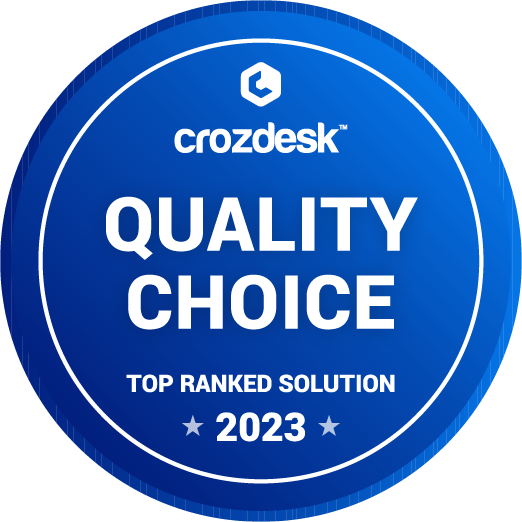5 reasons why your eCommerce business needs a PIM system
Let’s be honest – managing product information for your eCommerce business has probably become way more complicated than you ever expected it to be. What started as a simple spreadsheet has likely turned into a maze of supplier files, marketplace requirements, and endless copy-pasting that’s eating up way too much of your time.
If you’re running an eCommerce business, you know the drill. You’re juggling product listings across multiple channels, dealing with product onboarding from dozens of suppliers, and trying to keep everything consistent while your business grows. It’s exhausting, and frankly, there’s a better way.
A Product Information Management (PIM) system can solve these exact problems. It acts as your central command center for all product-related information and once you see what it can do, you’ll wonder how you ever managed without one.
Here are five solid reasons why a PIM system might just be the game-changer your eCommerce business has been waiting for.
1. Say goodbye to product onboarding headaches
We’ve all been there. A new supplier sends you their product catalog in some bizarre Excel format that doesn’t match anything else you’re working with. You spend hours reformatting, cross-referencing, and trying to make sense of their naming conventions. Meanwhile, you’ve got 50 other suppliers doing the exact same thing in 50 different ways.
A PIM system transforms this chaotic process completely. You can set up standardized product onboarding workflows that handle whatever format your suppliers throw at you. The system does the heavy lifting – validating data, standardizing formats, and flagging any issues before they become problems.
What does this mean for you? Instead of spending your weekends wrestling with supplier spreadsheets, you can focus on what really matters – growing your business. Plus, when you can onboard products faster and more accurately, you can work with more suppliers and expand your catalog without losing your sanity.
2. Master multi-channel product listing like a PRO
Here’s something every successful eCommerce business owner learns the hard way: what works on your website doesn’t necessarily work on Amazon. And what works on Amazon definitely doesn’t work on eBay or other marketplaces. Each platform has its own quirks, requirements, and best practices for product listings.
Without a PIM system, you’re basically playing a never-ending game of whack-a-mole, trying to keep product information consistent across all your channels while optimizing for each platform’s specific needs. It’s time-consuming, error-prone, and honestly, pretty frustrating.
A good PIM system eliminates this frustration entirely. You set up business rules once that define how each product should appear on different channels, and the system automatically applies these rules to generate optimized versions for each platform. Need SEO-friendly descriptions for your website? The system creates them based on your rules. Keyword-rich titles for Amazon? Generated automatically. Detailed specifications for B2B marketplaces? Handled without manual intervention.
The best part? When you need to update a product’s core information, you do it once in the PIM, and it automatically flows through your business rules to update all relevant channels. No more scrambling to remember which platforms need updating when your supplier changes a specification or you need to adjust pricing across multiple marketplaces.
3. Grow your business without growing your problems
Remember when your business was smaller and you could keep track of everything in your head? Those were simpler times. Now you’re dealing with hundreds or thousands of products, multiple suppliers, and expanding into new markets. The old ways of doing things just don’t scale.
PIM systems excel at growing with your business. You can give your suppliers direct access to update their own product information (with your approval, of course). You can set up automated rules that handle routine tasks like pricing updates. You can manage complex product relationships and variants without breaking a sweat.
Think of it this way – instead of your product management becoming more complicated as you grow, it actually gets easier. The system handles the complexity so you can focus on strategy, not data entry.
4. Cut costs and eliminate errors
Let’s talk numbers for a minute. How much time does your team spend each week on manual product data tasks? Copying information between systems, fixing inconsistencies, updating prices, correcting mistakes? If you’re like most eCommerce businesses, it’s probably more than you’d like to admit.
All that manual work isn’t just time-consuming, it’s expensive. And worse, it’s a breeding ground for errors that can cost you sales and damage your reputation. Wrong product descriptions, outdated prices, missing images – these mistakes add up fast.
A PIM system addresses this problem directly by automating routine tasks and catching errors before they reach your customers. Built-in validation rules check for common mistakes, automated workflows keep information synchronized, and your team can spend their time on activities that actually drive revenue.
The time savings from automating these routine tasks can be substantial, often making the PIM investment worthwhile relatively quickly. Plus, there’s real value in knowing your product information is accurate and consistent across all channels.
5. Speed up your time-to-market (and leave competitors in the dust)
In eCommerce, timing is everything. Whether you’re launching a seasonal product, jumping on a trending item, or trying to beat competitors to market with the latest innovation, speed matters. A lot.
The traditional approach to getting new products live with all the manual formatting, multiple platform uploads, and quality checks can take days or even weeks. By the time you’re ready to sell, the opportunity might have passed.
PIM systems excel in this area. Once you’ve got your workflows set up, you can go from product onboarding to live product listings across all your channels in a matter of hours. The system handles the formatting, applies your brand guidelines, generates optimized content, and pushes everything live simultaneously.
We’ve seen clients go from a week-long product launch process to same-day launches. When you’re dealing with hot products or limited inventory, that kind of speed can make the difference between a successful launch and a missed opportunity.
Ready to make the switch?
Look, we get it. Implementing new systems can feel overwhelming, especially when your current process (however chaotic) is at least familiar. But here’s the thing – while you’re spending hours on manual product management, your competitors might already be leveraging PIM systems to operate more efficiently, reach more channels, and grow faster.
The reality is that modern eCommerce businesses need modern solutions. Whether you’re struggling with product onboarding bottlenecks, drowning in multi-channel product listing requirements, or just tired of spending your valuable time on tasks that should be automated, a PIM system can transform how you work.
The question isn’t really whether you need these capabilities – if you’re serious about growing your eCommerce business, you absolutely do. The real question is how much longer you want to wait before you start gaining these competitive advantages.
Your products are the heart of your business. Isn’t it time you had a system that treats them that way?




